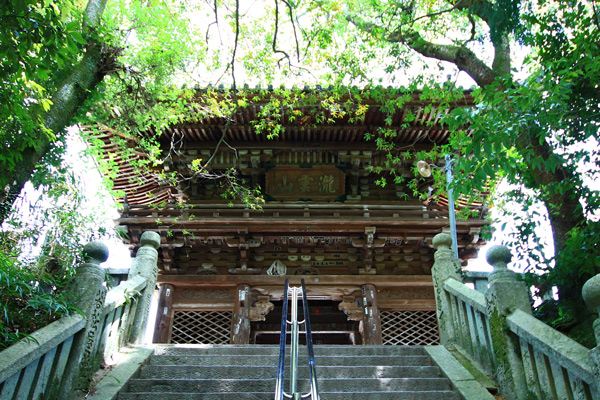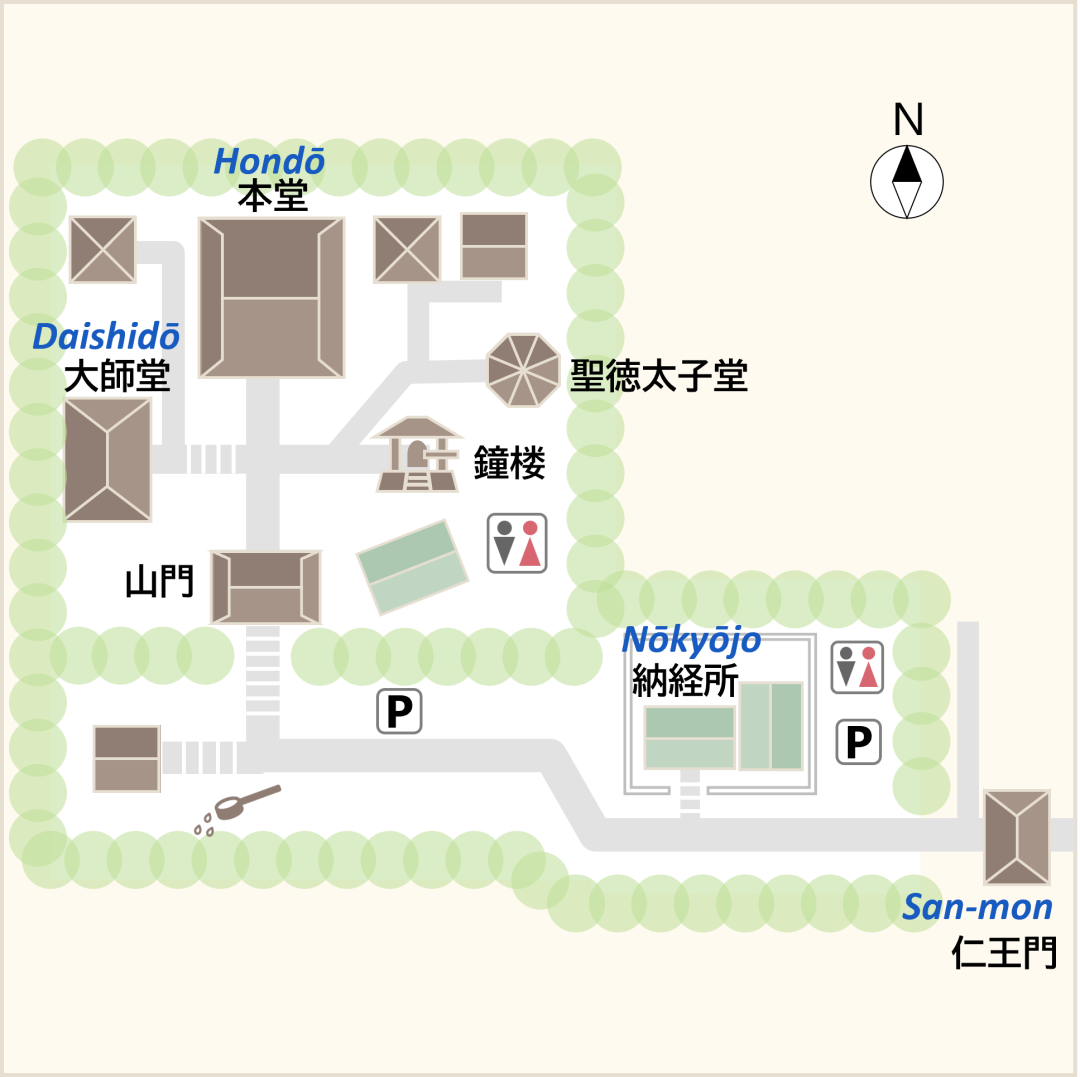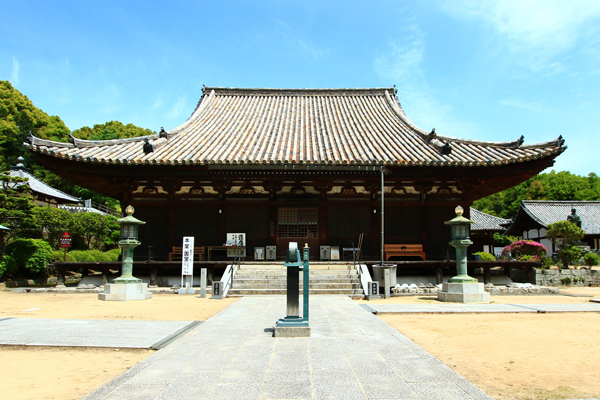The Shikoku Pilgrimage Temple Guide
Temple 52, Taisanji

Precinct map

History of the temple
Mano no Choja is said to be the founder of Taisanji. There is an interesting legend that says Mano no Choja built the temple in one night.
Chosha was a charcoal burner in Bungo (Oita), but by divine decree he married Princess Otsu, daughter of Minister Koga, and became a wealthy man. In 587, while on his way to Osaka by ship to do business, Mano no Choja was caught in a heavy storm. After praying to Kannon Bosatsu for his safety, he landed on the shore of Takahama. He decided to build a temple to show his gratitude. He enlisted Bungo craftsmen and stacked the wooden framework in the ship to build a large Hondo. They arrived at Takahama quickly, thanks to a favorable wind. They set to work and labored through the night. In the morning when the sun was shining brightly, the Hondo was completed. Since then it has been called, "the hall built overnight.”
In 739, by order of Emperor Shomu (reigned 724-749), Gyoki carved a statue of Juichimen Kannon (Eleven-faced Bodhisattva Who Hears the Sounds of the World) and placed a small image of Kannon within a larger statue, which had been found by Mano no Choja at Mount Ryuunzan. The temple flourished during the reign of Emperor Kohken (749-758). It was so magnificent that it had seven main buildings and 66 monk’s cells. Kobo Daishi visited the temple in his later years during the Tencho era (824-834), and he performed a goma fire ritual and changed the temple to the Shingon sect from the Hosso sect of Buddhism.
Six emperors, including Go-Reizei (reigned 1045-1068) donated statues of Juichimen Kannon. Each statue is approximately 150 cm tall and, along with the principal image, they are National Important Cultural Properties. They are enshrined in a case in the Hondo. The present Hondo is the third one built by Mano no Choja. It is one of the biggest among Shingon temples and is a National Treasure.
Highlights
Hondo
The Hondo, a National Treasure, was donated in 1305 by the Kawano family, lords of Matsuyama Castle. It has a Dutch gable roof with tiles.
Niomon Gate
Like the Hondo, this gate was rebuilt in the Kamakura period (1185-1333). It has a Dutch gable roof with tiles. It is a National Important Cultural Property.
Shotoku Taishido
Shotoku Taishi visited Iyo (Ehime) and established a connection with this temple. The statue of Shotoku Taishi enshrined here is identical to the one in the Yumedono of Horyuji in Nara.

Details
Names: Ryūunzan, Gojiin, Taisanji
Denomination: Shingon sect, Chizan school
Principal Image: Juichimen Kannon Bosatsu
Founder: Mano no Choja
Founded: Late 6th century
Access
Address: 1730, Taisanji-cho, Matsuyama City, Ehime 799-2662
Phone: 089-978-0329
Parking: Available (free of charge)
Lodging: None
Official website: None
